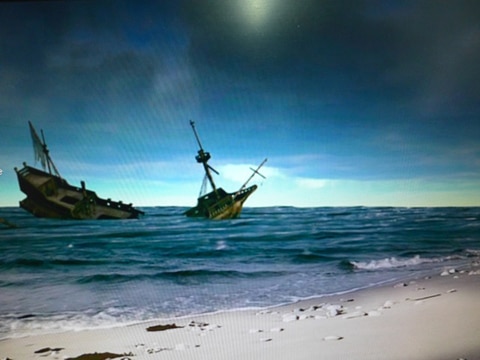The forgotten slaves of Tromelin
Île des Sables, an islet lost in the middle of the Indian Ocean whose nearest land is 500 kilometers away... At the end of the 18th century, a ship was shipwrecked there with a "cargo" on board. Malagasy slaves, bought in fraud, and intended to be sold in the island of France (current Mauritius). The survivors then build a makeshift boat. Only the white crew can find a place there, leaving behind them about sixty slaves. The survivors will survive on this piece of rock crossed by the storms. It was not until November 29, 1776, fifteen years after the shipwreck, that the Chevalier de Tromelin recovered the eight surviving slaves: seven women and an eight-month-old child. Once known in mainland France, this “news item” would be denounced by Condorcet and the abolitionists, at the dawn of the French Revolution. Max Guérout, a former naval officer, creator of the Naval Archeology Research Group (GRAN), has mounted several expeditions under the patronage of UNESCO to find traces of the stay of the castaways. His findings once again demonstrate the human ability to adapt and survive, despite everything.
The archaeologist invited the designer, Sylvain Savoia, to join them on a month-long expedition to Tromelin. From there was born this book: a comic strip that intertwines the story "at human level" (we "see" the story from the point of view of a young slave, one of the survivors saved by the knight of Tromelin) with the logbook of an archaeological mission on a lost islet in the Indian Ocean. After the international success of Marzi, Sylvain Savoia once again offers readers a magnificent lesson in humanity. Looking for traces of these slaves abandoned in the middle of nowhere, Sylvain Savoia himself landed on this small isolated island in the company of a scientific team. He tells us in The Forgotten Slaves of Tromelin how his life on the island was going, and how he imagined that of the survivors as his stay progressed. Like a travel diary, he describes this scientific expedition to us: the researchers, the discoveries made during this brief passage of civilization some three centuries earlier, etc. But Sylvain Savoia also imagines the story of these forgotten slaves of Tromelin. The two stories thus intertwine in an ordered division and the reader discovers how Captain Tromelin abandoned these men and women... before coming to look for them fifteen years later. They were only eight, including a baby.
Successive missions (2006, 2008, 2010) made it possible to study the wreck of the Utile, to highlight the extent of the habitats built by the castaways, to better understand their organization and their ability to adapt to the shipwrecked condition, in an environment with limited resources, but put to good use with ingenuity. (collected from the internet)
The castaways of Tromelin
08/28/2015
0 comment






Comment (0)